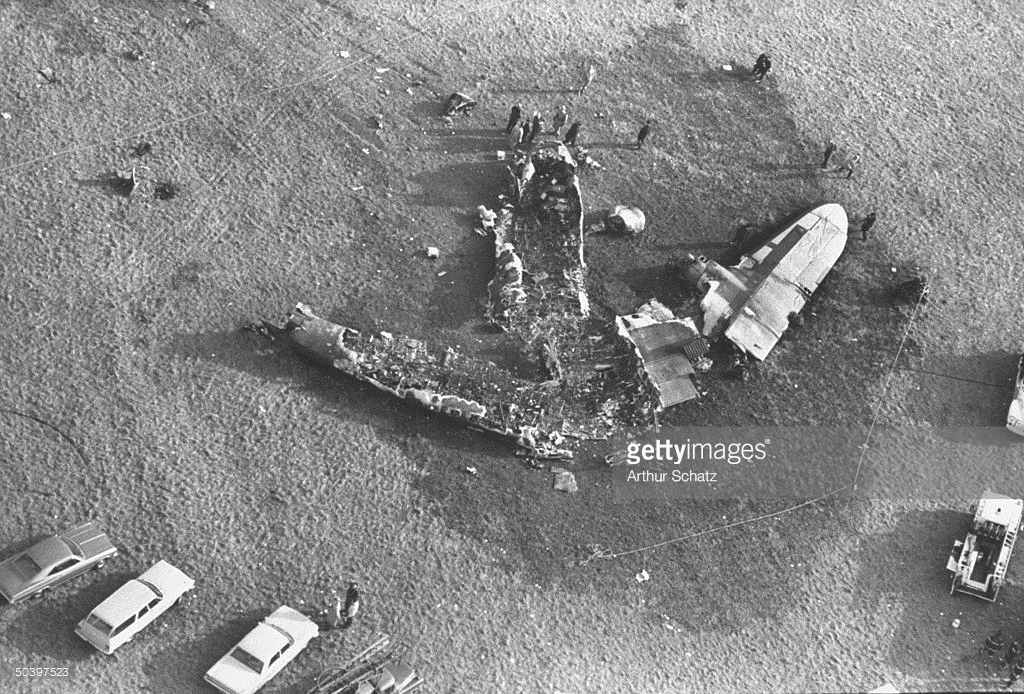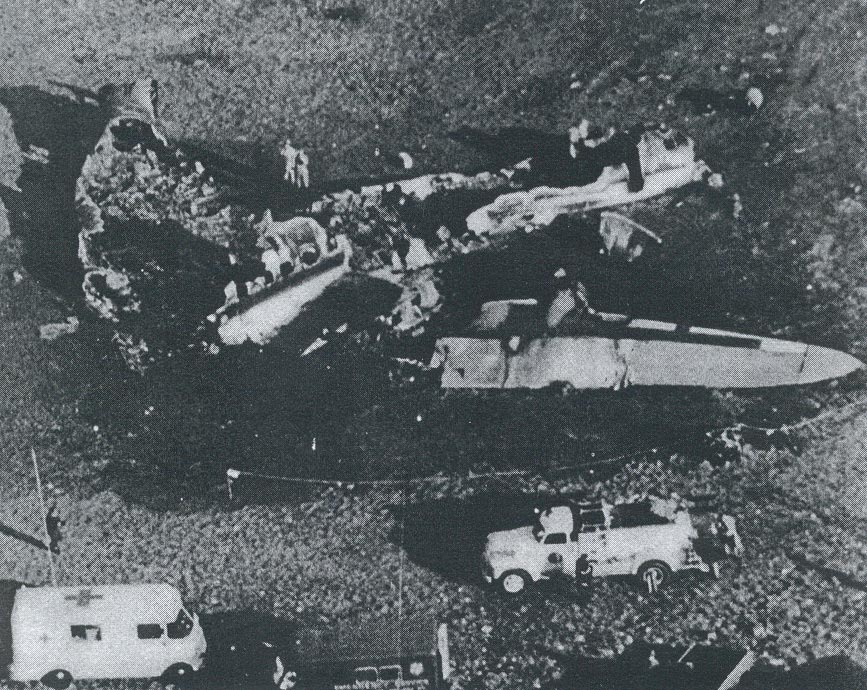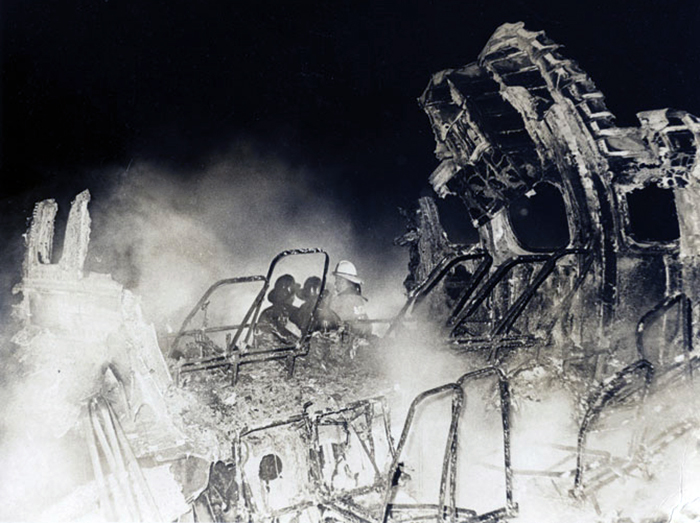Zone
Crash of a De Havilland DHC-6 Twin Otter in Rockland: 17 killed
Date & Time:
May 30, 1979 at 2055 LT
Registration:
N68DE
Survivors:
Yes
Schedule:
Boston - Rockland
MSN:
229
YOM:
1969
Flight number:
DE46
Crew on board:
2
Crew fatalities:
Pax on board:
16
Pax fatalities:
Other fatalities:
Total fatalities:
17
Captain / Total hours on type:
603.00
Copilot / Total hours on type:
46
Aircraft flight hours:
21050
Circumstances:
About 2055LT, Downeast Airlines flight 46 crashed into a heavily wooded area about 1,2 mile south-southwest of the Knox County Regional Airport in Rockland, Maine. The crash occurred during a non-precision instrument approach to runway 03 in instrument meteorological conditions. Of the 16 passengers and 2 crew members aboard, only one passenger survived the accident. The aircraft was destroyed.
Probable cause:
The National Transportation Safety Board determines that the probable cause of the accident was the failure of the flightcrew to arrest the aircraft's descent at the minimum descent altitude for the non-precision approach, without the runway environment in sight, for unknown reasons. Although the Safety Board was unable to determine conclusively the reason(s) for the flightcrew's deviation from standard instrument approach procedures, it is believed that inordinate management pressures, the first officer's marginal instrument proficiency, the captain's inadequate supervision of the flight, inadequate crew training and procedures, and the captaints chronic fatigue were all factors in the accident.
Final Report:


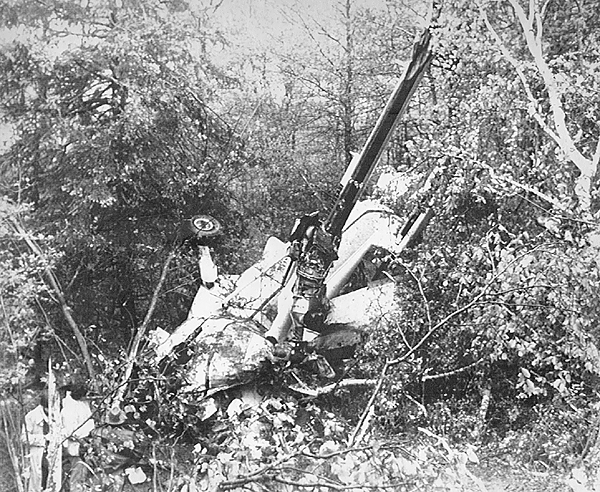
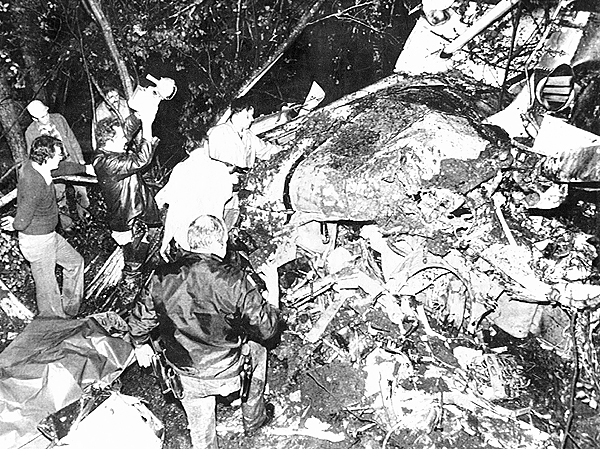
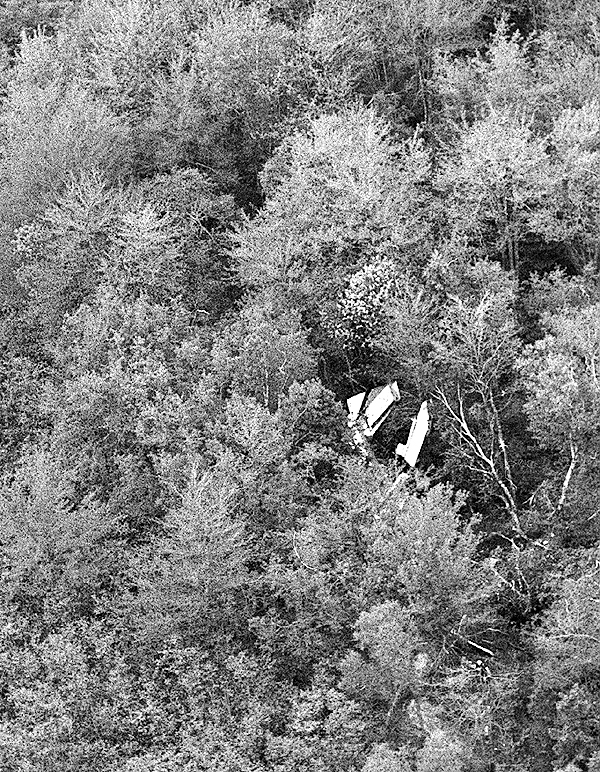
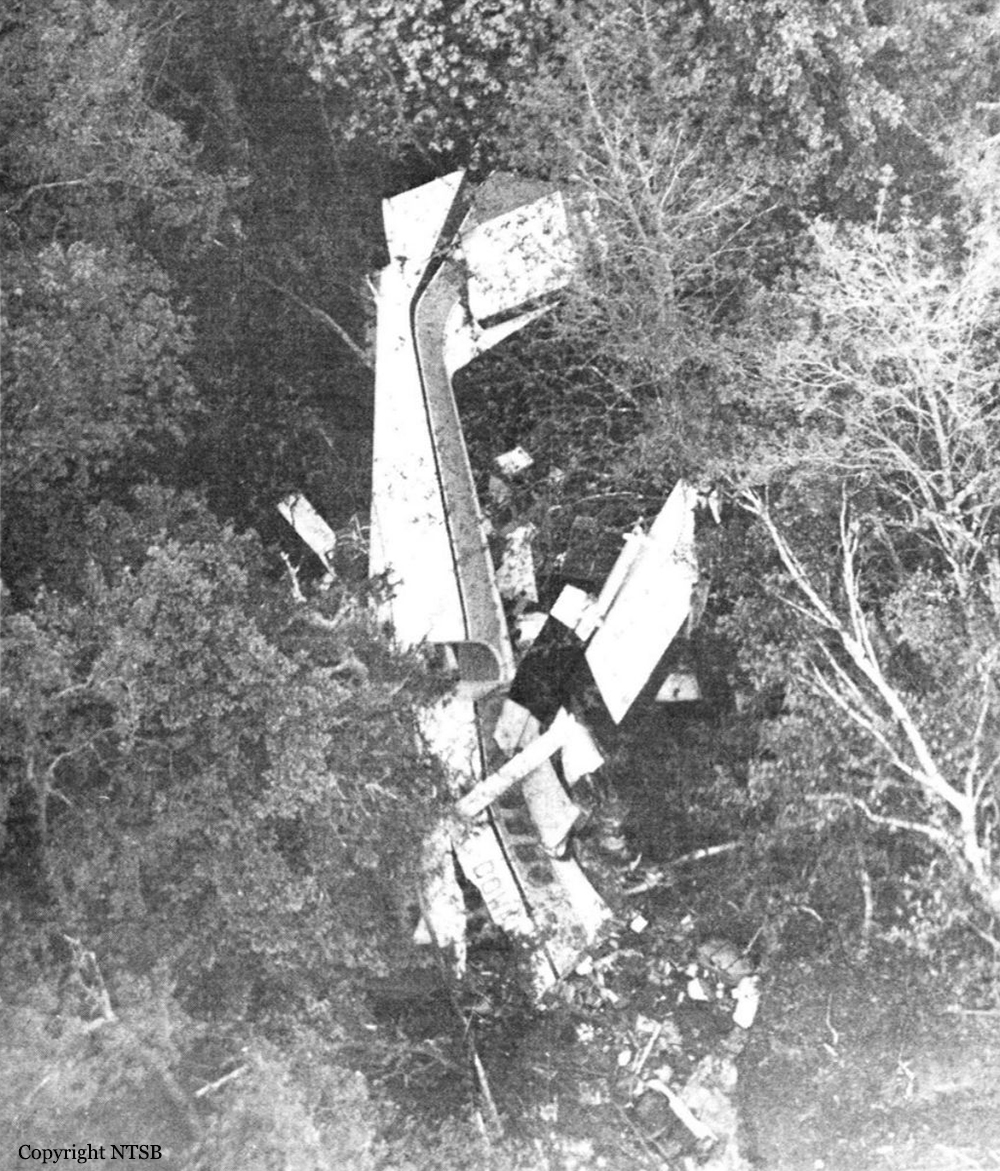

Crash of a Beechcraft E18S in Newburgh
Date & Time:
Apr 4, 1979 at 2315 LT
Registration:
N149PA
Survivors:
Yes
Schedule:
Boston - Newburgh
MSN:
BA-412
YOM:
1959
Crew on board:
1
Crew fatalities:
Pax on board:
0
Pax fatalities:
Other fatalities:
Total fatalities:
0
Captain / Total hours on type:
99.00
Circumstances:
While descending to Newburgh-Stewart Airport by night and marginal weather conditions, the pilot informed ATC about icing conditions but was vectored for a holding pattern due to heavy traffic. On short final, the twin engine airplane stalled and crashed about 1,600 feet short of runway threshold. The pilot, sole on board, was seriously injured.
Probable cause:
Stall on approach due to improper in-flight decisions. The following contributing factors were reported:
- Airframe ice,
- Icing conditions including sleet, freezing rain,
- Visibility three miles or less,
- Fog,
- Pilot informed of icing at holding altitude prior to his entering holding.
- Airframe ice,
- Icing conditions including sleet, freezing rain,
- Visibility three miles or less,
- Fog,
- Pilot informed of icing at holding altitude prior to his entering holding.
Final Report:
Crash of a Piper PA-60 Aerostar (Ted Smith Aerostar 600) in Templeton: 2 killed
Date & Time:
Jan 11, 1979 at 1110 LT
Registration:
N8022J
Survivors:
No
Schedule:
Boston - Syracuse
MSN:
60-0526-170
YOM:
1978
Crew on board:
1
Crew fatalities:
Pax on board:
1
Pax fatalities:
Other fatalities:
Total fatalities:
2
Circumstances:
While in cruising altitude in good weather conditions, en route from Boston to Syracuse, the twin engine airplane collided with a Piper PA-31-350 Navajo Chieftain owned by the Tamposi-Nash Real Estate Group and registered N33TN. En route from Concord to White Plains, it was carrying two passengers and one pilot. Following the collision, both aircraft entered a dive and crashed near Templeton. Both aircraft were destroyed and all five occupants were killed.
Probable cause:
In-flight collision with another aircraft after the pilot failed to see and avoid other traffic while cruising in an uncontrolled area.
Final Report:
Crash of a BAc 111-203AE in Rochester
Date & Time:
Jul 9, 1978 at 1730 LT
Registration:
N1550
Survivors:
Yes
Schedule:
Boston - Rochester - Montreal
MSN:
44
YOM:
1965
Flight number:
AL453
Crew on board:
4
Crew fatalities:
Pax on board:
73
Pax fatalities:
Other fatalities:
Total fatalities:
0
Captain / Total hours on type:
7008.00
Copilot / Total hours on type:
4687
Aircraft flight hours:
33693
Aircraft flight cycles:
48215
Circumstances:
The pilot-in-command adopted a wrong approach configuration and passed over the runway 28 threshold at an excessive speed of 184 knots (61 knots above the Vref) in a nose down attitude. The nose gear landed first at a speed of 163 knots (40-45 knots above normal touchdown speed) 2,540 feet past the runway threshold (runway 28 is 5,500 feet long). Unable to stop within the remaining distance, the airplane overran, struck a drainage ditch, lost its undercarriage and came to rest 728 past the runway end. All 77 occupants were evacuated safely, one of them was slightly injured.
Probable cause:
The captain's lack of awareness of airspeed, vertical speed, and aircraft performance throughout an ILS approach and landing in visual meteorological conditions which resulted in his landing the aircraft at an excessively high speed and with insufficient runway remaining for stopping the aircraft, but with sufficient aircraft performance capability to reject the landing well after touchdown. Contributing to the accident was the first officer's failure to provide required callouts which might have alerted the captain to the airspeed and sink rate deviations. The Safety Board was unable to determine the reasons for the captain's lack of awareness or the first officer's failure to provide required callouts.
Final Report:
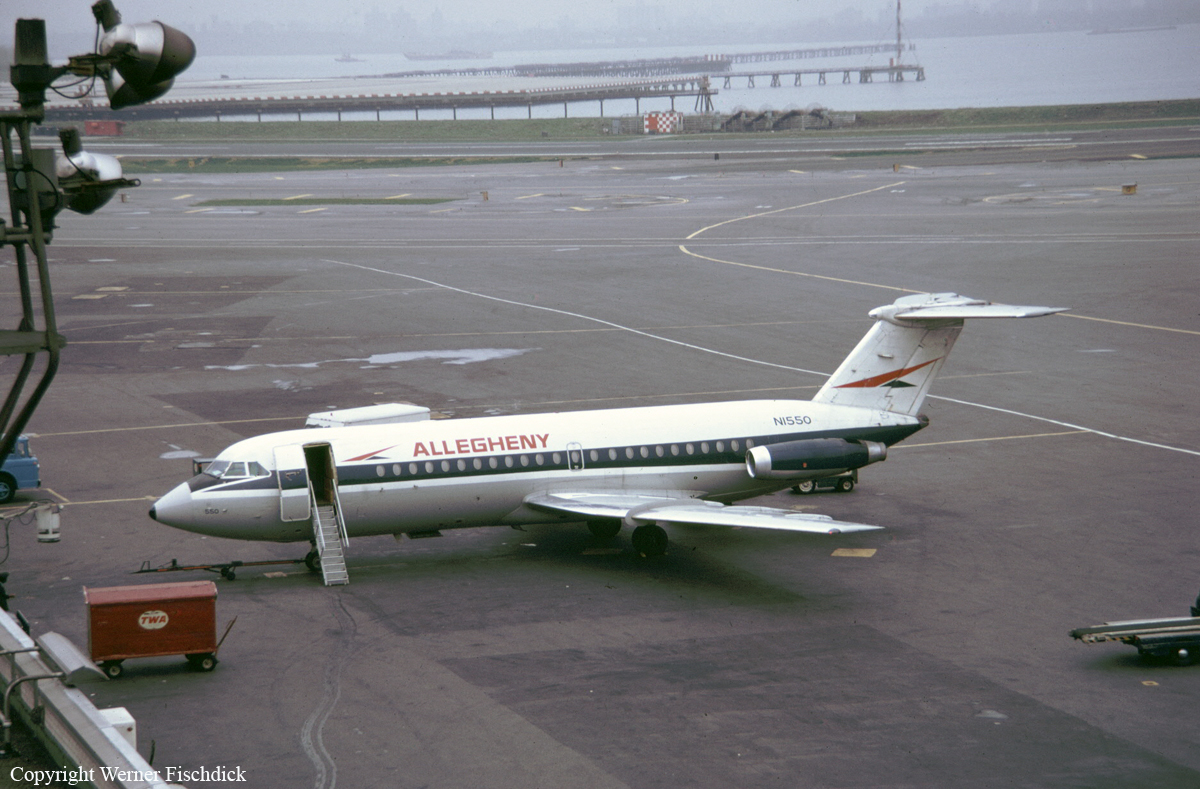
Crash of a Mitsubishi MU-2-25 Marquise in Detroit
Date & Time:
Apr 4, 1977 at 2004 LT
Registration:
N321MA
Survivors:
Yes
Schedule:
Boston - Detroit
MSN:
276
YOM:
1973
Crew on board:
2
Crew fatalities:
Pax on board:
0
Pax fatalities:
Other fatalities:
Total fatalities:
0
Captain / Total hours on type:
144.00
Circumstances:
On final approach to Detroit-Willow Run Airport, the crew encountered poor weather conditions and decided to make a go-around for unknown reasons. Shortly later, the twin engine crashed near the airport. Both occupants were seriously injured and the aircraft was destroyed.
Probable cause:
Collision with ground during a missed approach due to improper maintenance. The following contributing factors were reported:
- Flight control systems: elevator tab control system, frayed and binding,
- Low ceiling,
- Fog,
- Maintenance conducted on elevator trim tab bracket a day prior to the accident.
- Flight control systems: elevator tab control system, frayed and binding,
- Low ceiling,
- Fog,
- Maintenance conducted on elevator trim tab bracket a day prior to the accident.
Final Report:
Crash of a Piper PA-31-310 Navajo in Augusta: 3 killed
Date & Time:
Aug 19, 1971 at 2140 LT
Registration:
N595DE
Survivors:
Yes
Schedule:
Boston - Augusta
MSN:
31-422
YOM:
1969
Flight number:
DE88
Crew on board:
1
Crew fatalities:
Pax on board:
7
Pax fatalities:
Other fatalities:
Total fatalities:
3
Captain / Total hours on type:
625.00
Aircraft flight hours:
2468
Circumstances:
The aircraft departed Boston-Logan at 2028LT bound to Augusta with seven passengers and a pilot on board. At the origin, the flight was scheduled to Rockland but it was not possible to land there due to foggy conditions. The flight was cleared for a VOR approach at 2114LT. At 2127LT, flight 88 reported a missed approach and was cleared for another VOR approach at that time. At 2140LT, the flight reported 'four miles out'. This was the last known transmission made by the flight. The wreckage was located in a heavily wooded area on Allen Hill at approximately the 520 foot level. Allen Hill is a prominent terrain feature which is 640 feet high, located approximately 4 nautical miles from the threshold of runway 17 and eight-tenth of a mile west of the approach radial. The pilot and two passengers were killed, two passengers received serious injuries and three passengers received minor injuries.
Probable cause:
The NTSB determines that the probable cause of this accident was the improper action of the pilot in discontinuing the execution of a non-precision instrument approach and attempting to maintain visual flight while operating in instrument flight conditions at an altitude below the level of obstructing terrain.
Final Report:
Crash of a Fairchild-Hiller FH-227C in Lebanon: 32 killed
Date & Time:
Oct 25, 1968 at 1717 LT
Registration:
N380NE
Survivors:
Yes
Schedule:
Boston – Lebanon – Montpelier
MSN:
517
YOM:
1966
Flight number:
NE946
Crew on board:
3
Crew fatalities:
Pax on board:
39
Pax fatalities:
Other fatalities:
Total fatalities:
32
Captain / Total hours on type:
1181.00
Copilot / Total hours on type:
281
Aircraft flight hours:
3828
Circumstances:
Northeast Airlines Flight 946 departed Boston 17:42 for a flight to Lebanon, NH and Montpelier, VT. The Fairchild climbed to a cruising altitude of 8000 feet. At 18:08 the crew were cleared for an approach to the Lebanon Airport to cruise at 5,000 feet and report leaving 6,000 feet. At 18:10:45, the controller advised the crew that radar service had been terminated and the flight was cleared to contact the Lebanon Flight Service Station (FSS). One minute later the FSS told the crew that the weather was an estimated ceiling of 2,000 feet overcast; visibility was 10 miles; there were breaks in the overcast; the altimeter setting was 29:55; and the wind was calm. The flight did not perform the published instrument approach procedure but executed an abbreviated approach by making a right turn from their northwesterly heading and then a left turn back to intercept the inbound radial to the VOR station. The inbound radial was intercepted at approximately 8 to 10 miles northeast of the VOR station where it passed through an altitude of about 4500 feet. The crew began the descent but did not level off at 2,800 feet m.s.l., the minimum altitude inbound to the VOR. During the approach to runway 25 the airplane contacted trees on the cloud-shrouded side of a steep, rocky, heavily wooded mountain 57 feet below the summit at 2,237 feet m.s.l. The aircraft cut a swath trough the trees broke up and caught fire. Two crew members and 30 passengers were killed while 10 others were injured.
Probable cause:
The premature initiation of a descent towards the Minimum Descent Altitude, based on navigational instrument indications of an impending station passage in an area of course roughness. The crew was not able to determine accurately its position at this time because they had performed a non standard instrument approach and there were no supplement navigational aids available for their use.

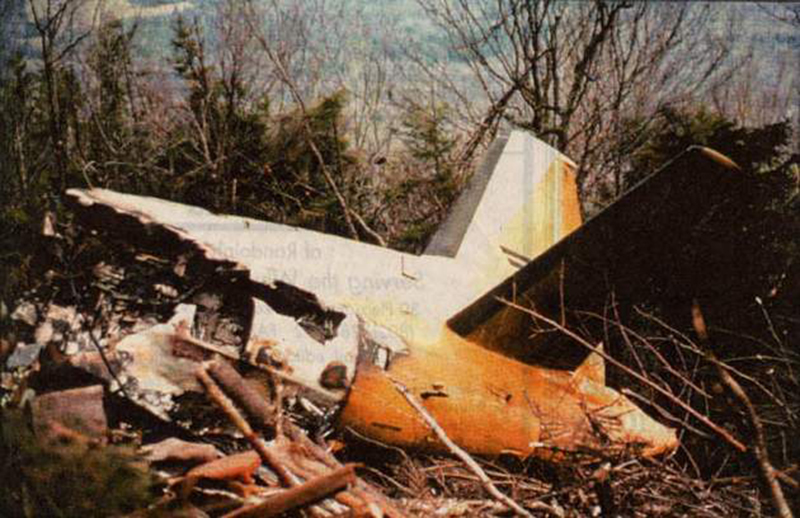

Crash of a Douglas DC-6 in New York
Date & Time:
Feb 24, 1967 at 0225 LT
Registration:
N8224H
Survivors:
Yes
Schedule:
Philadelphia - Boston
MSN:
43741/290
YOM:
1952
Crew on board:
5
Crew fatalities:
Pax on board:
9
Pax fatalities:
Other fatalities:
Total fatalities:
0
Captain / Total hours on type:
3348.00
Circumstances:
While cruising at an altitude of 15,500 feet over Holmdel, New Jersey, the aircraft suffered an explosive decompression of the cabin. A 60 by 125 inches 'panel' detached from the fuselage and struck the engine number three, causing the detachment of its propeller. The crew started an emergency descent and was able to complete an emergency landing at New York Airport. All 14 occupants were evacuated safely while the aircraft was later declared as damaged beyond repair.
Probable cause:
Fatigue fracture of the fuselage and explosive decompression caused by an inadequate maintenance and inspection on part of the ground maintenance personnel. Investigations reported that at the time of the decompression, the cabin was pressurized for 2,500 feet while the aircraft was flying at an altitude of 15,500 feet.
Final Report:
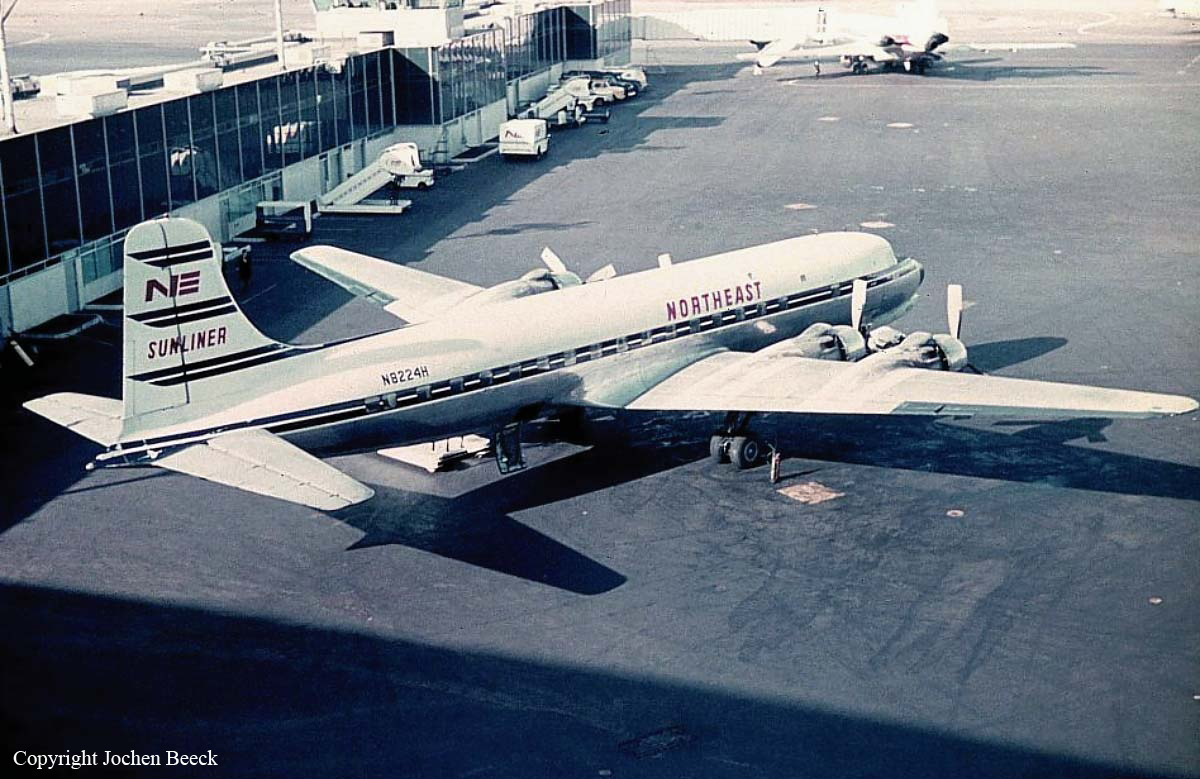
Crash of a Lockheed L-1049C Super Constellation in Carmel: 4 killed
Date & Time:
Dec 4, 1965 at 1619 LT
Registration:
N6218C
Survivors:
Yes
Schedule:
Boston – Newark
MSN:
4526
YOM:
1953
Flight number:
EA853
Crew on board:
5
Crew fatalities:
Pax on board:
49
Pax fatalities:
Other fatalities:
Total fatalities:
4
Captain / Total hours on type:
1947.00
Copilot / Total hours on type:
899
Aircraft flight hours:
32883
Circumstances:
Trans World Airlines, Inc., Flight 42, (TW 42), a Boeing 707, N748TW, and Eastern Air Lines, Inc., Flight 853, (EA 853), a Lockheed 1049C, N6218C, were involved in a midair collision over the Carmel, New York VORTAC while en route to the New York City area at approximately 1619 e.s.t., December 4, 1965. TW 42 departed San Francisco, California, and was approaching the New York area from the northwest for an approach and landing at the John F. Kennedy International Airport. The flight was on an IFR flight plan at an assigned altitude of 11,000 feet mean sea level (m.s.l.). EA 853 departed Boston, Massachusetts, and was approaching the New York area from the northeast for an approach and landing at the Newark Airport. This flight was on an IFR flight plan at an assigned altitude of 10,000 feet m.s.l. As EA 853 was approaching the Cannel VORTAC on a southwesterly heading, the first officer saw TW 42 at his two o'clock position. Because he believed the jet was at his altitude and on a collision course he called "Look Out" and grasped the control wheel to assist the captain in a pull up. At approximately the same time, the captain of TW 42 observed EA 853 at his ten o'clock position on what he believed to be a collision course. He rolled into a right turn and pulled back on the yoke. He decided this maneuver would not clear EA 853 and he, assisted by his first officer, attempted to reverse the turn by rolling to the left and pushing on the yoke. The aircraft collided at an altitude of approximately 11,000 feet m.s.l. While cruising at an altitude of some 10,000 feet over Carmel on approach to Newark, the four engine aircraft collided with a TWA Boeing 707-131B registered N748TW. While the crew of the B707 was able to complete an emergency landing at JFK Airport despite the fact that a piece of 7.5 meters from the left wing was torn off, the crew of the Constellation first lost control of his aircraft but then regain control and was able to make an emergency landing in a prairie located on Titicus mountain, near Carmel. Three passengers died, plus the Constellation's pilot, Captain Charles J. White, who had returned to the aircraft's cabin to help the last passenger.
Probable cause:
Misjudgment of altitude separation by the crew of EA853 because of an optical illusion created by the up-slope effect of cloud tops resulting in an evasive manoeuvre by the EA853 crew and a reactionary evasive manoeuvre by the B707 crew as well.
Final Report:
